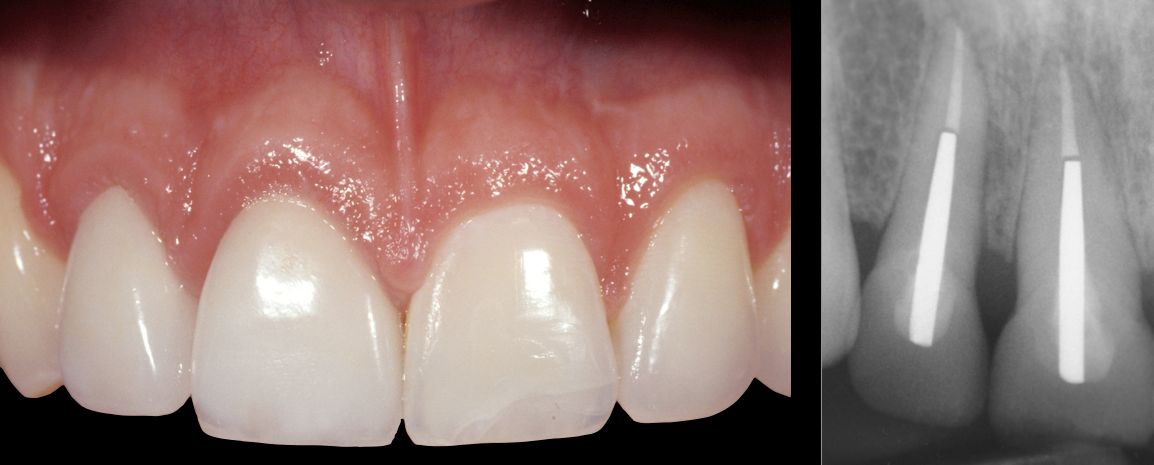Managing the Problem Versus Curing It: Part II
By Frank Spear on June 18, 2014 | 1 comment In my last article, I mentioned that the average life span continues to increase over time and because of this fact, the treatment we provide for our patients needs to last as long as possible. In this article, I would like to go over an example of treatment failure and the options that are appropriate today.
In my last article, I mentioned that the average life span continues to increase over time and because of this fact, the treatment we provide for our patients needs to last as long as possible. In this article, I would like to go over an example of treatment failure and the options that are appropriate today.
A failure of a fixed bridge that replaced a missing central and lateral 20 years after it was placed is one example. This involves prepping two teeth that may not have needed restorations if it wasn’t for the bridge – now the patient may need three or four teeth replaced if the abutments fracture. A failure of two adjacent anterior implants replacing the same central and lateral is an extremely difficult problem, especially if the failure is bone loss from peri-implantitis.
My reasoning for using the example of the missing central and lateral is simple. What if the teeth had been salvageable – but they still would have required endo, post cores, forced extrusion, crown lengthening and crowns? The decision was made to remove the teeth instead of going through all the expense and time of treatment. If the patient was 60 years old then I agree with this decision. But would my opinion still be the same if the patient had been 25 years old and fractured the teeth in a traumatic accident? (Figure 1)

Now any treatment performed will almost certainly need to be redone. If it’s just the restorations that need to be redone, then no problem – that’s easy. However, if it requires removing implants, grafting bone, grafting soft tissue, new implants and new restorations then the cost of the original plan to keep the teeth doesn’t look too bad. (Figure 2)

Also if the teeth had lasted 20 years before they fractured, you would still have decent bone since most failures of teeth with post and cores are structural and don’t impact bone. Ultimately, my purpose in writing these two articles is simple. We need to consider our decisions in the overall perspective of the patient’s life. If they are young, we need to relay that the treatment we perform today will not solve their problem for the rest of their life, but it can manage it for a number of years until it needs to be addressed again. (Figure 3)

We simply cannot pick the quickest and easiest solution – we must do whatever makes the most sense today to minimize trauma and biologic costs in the future. Even if I believed the central and lateral wouldn’t last the patient’s lifetime – they manage a stage of her problem, maintain bone and soft tissue and will eventually get her to a place where better replacement opportunities will exist.
Comments
May 11th, 2015